Tales From the Magic Skagit: The Ties that Bind — An Interview with Jo Wolfe
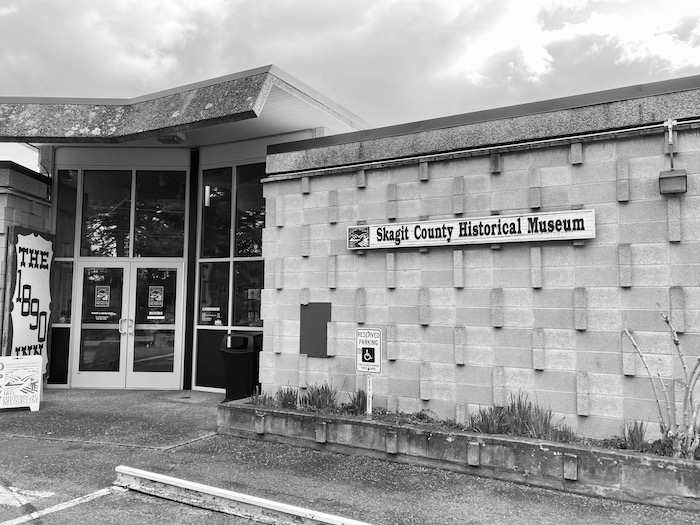
It takes more than a pandemic to deter the mission of the Skagit County Historical Museum.
Jo E. Wolfe and the Skagit Valley have a history — and as is ultimately the case with all history, it’s personal. Since Jo became a part of the Skagit County Historical Museum eleven years ago, however, the relationship has become professional as well.
Our most durable memories are those we carry from our childhoods. They are more than “recollections” — they are affirmations. They explain us to us. They are the captioned illustrations in the Story of Your Life. You can skim through them and get the gist of the narrative — the nuance absent the details.
A Livelong Connection to the Skagit Valley
Jo Wolfe didn’t grow up in the Skagit Valley. “I lived on a little farm in Snohomish County,” she told me. “I went to Snohomish schools and graduated from Snohomish High.” But her family had deep Skagit Valley ties. “My dad’s family migrated from North Carolina around 1914-15, and my mom’s family migrated from Alberta around 1920. They settled ‘upriver’ around Hamilton.”
Although her parents moved to the Everett area soon after they were married in the 1930s, Jo remained close to her Skagit Valley roots. As she recalled, “I grew up spending a lot of time in the Skagit Valley because I had aunts and uncles here, along with cousins and family friends. I remember many a Saturday when Daddy would wake us up and say, ‘Hey, let’s go up the Skagit today!’ That is how he would refer to it — ‘the Skagit’ — so it’s always been near and dear to my heart.”
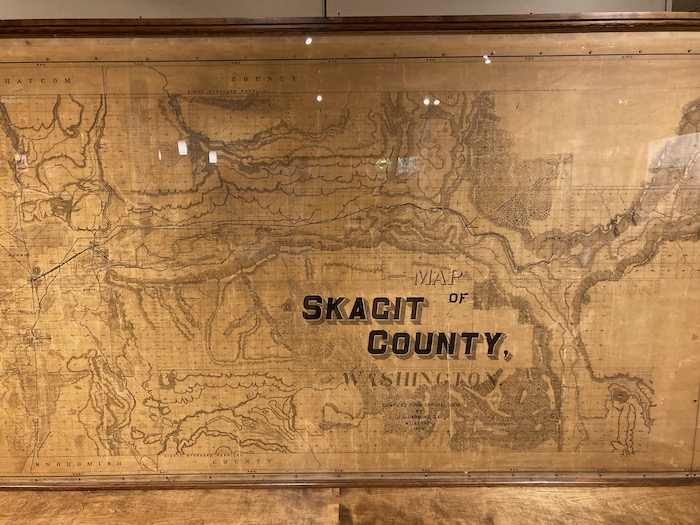
Listening to Jo recount her childhood memories of life in the Skagit Valley imparts a similar feeling to the sepia toned images of simpler times, summer idylls, and the magic of a rural childhood that we experience in the exhibits of the museum.
“My fondest memories are of being with relatives,” said Jo. “My aunt and uncle owned a grocery store and gas station in Lyman. It wasn’t on the highway or downtown Lyman, but on a backroad near the Lyman cemetery. They lived behind it and had this gas station. We would go and visit, and the parents would go off to do whatever they were doing, and us kids would hang out in the store with big gallon jars of pickled eggs on the counter, which always fascinated me; I never ate one. And we would usually get a treat of a bottle of pop from one of those old coolers that had cold water in it, and you had to pick your bottle and run it through this maze-like thing to get to the release and pull it out. Another of my aunties had a farm where she raised pigs, and I remember these huge pigs and piglets. It was fun to hear the stories that my parents told of their childhoods.”
The History of the Museum

Given her personal history, it should come as no surprise that Jo was drawn to the Skagit County Historical Museum, and following the end of a career at Mercy Corps in Seattle and a homecoming of sorts to the Skagit Valley, she joined the museum in the part time (very, she adds) position of marketing and fundraising coordinator. Three years ago she became the museum’s director.
As recounted by Jo, the origins of the Skagit County Historical Museum go back to an annual Pioneer Association picnic held in Mount Vernon in the 1950s. “The board president at that time started advocating for collecting the history of our county, and over the following years he would repeat it. A charter was finally signed in 1958 establishing the Skagit County Historical Society. I have the original charter on the wall in my office.”
As the Historical Society began collecting the stories, artifacts, and photos that would form its collection, it began searching for some space to house them. “At this time, Skagit Valley College was new and they had some space,” said Jo,”so they allowed the Historical Society some room to store their artifacts, and periodically students and volunteers would put together exhibits based on things that were stored there.”
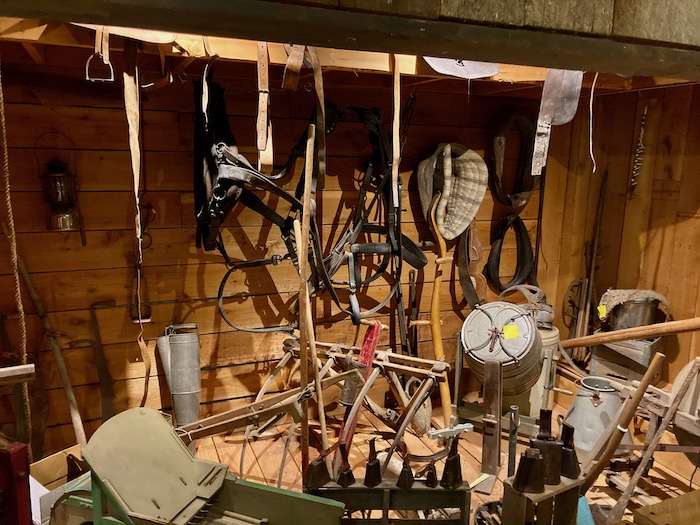
Eventually the college needed the space they had provided to the Historical Society, so the Society explored property near the college and at other locations in the Valley like old farms and barns. The site on the hill in La Conner became very attractive because there were a number of lots that were owned by Historical Society members who were willing to donate them, as well as some property the city owned that could be purchased at a reasonable price. The Society began the planning and the fundraising process, and in 1968 they began building the museum at the top of the hill. “It has arguably the best view in the county,” Jo said proudly. “On a clear day you can see from Baker to Rainier.”
Vision and Mission
Considering its size (less than 2,000 square miles — nearly 10 percent of which is water) and its small population (just shy of 117,000 as of the last census), you might think that getting ones arms around the Skagit Valley’s history might not be a challenge — especially considering that its history goes back less than 150 years. What belies that impression, however, is Skagit County’s diversity.

“If you look at the map of Skagit County, it is long and skinny, reaching from the North Cascades to the islands in the sound. It is very diverse — geographically and culturally, with some big urban centers and lots of wilderness and agriculture. And the history is the same — from the original people who were here pre-discovery and the people who came and settled on the land and who, like pioneer and developer Michael Sullivan, who when he stood on Pleasant Ridge said, ‘This is land that could feed thousands!’”
“Communicating the vision of the many different people who have been a part of this community is what I see as the value of the museum,” Jo added. “Our tagline is ‘presenting Skagit history for all people for all time.’ Sometimes we don’t catch all people, but we’re working really hard at expanding our exhibits and collections to reflect the full beauty and culture of our county. We are charged with preserving and presenting the history of the entire county.”
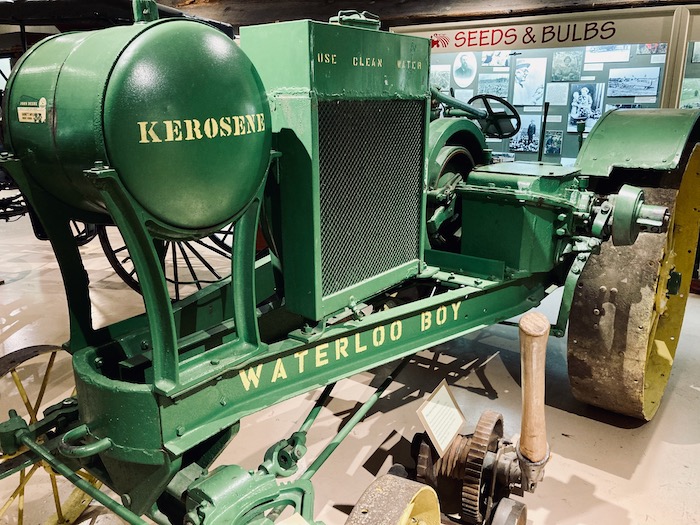
As integral as the pioneer experience has been to the history and culture of the Skagit Valley, Jo is highly cognizant of the fact that its stories stretch back much further in time.
“In our south wing we have five permanent display cases that are part of our extensive native peoples collection of baskets, stone tools, and carvings,” said Jo. “The baskets get rotated because its not good to have them constantly exposed to light, and we keep them in a humidity-controlled environment. We have a huge collection as well that is not on display, and we are currently in conversation with the archivist at the Swinomish Tribal Community to do an exhibit this fall on the history of the tribal community and the relationship between the two cultures.”
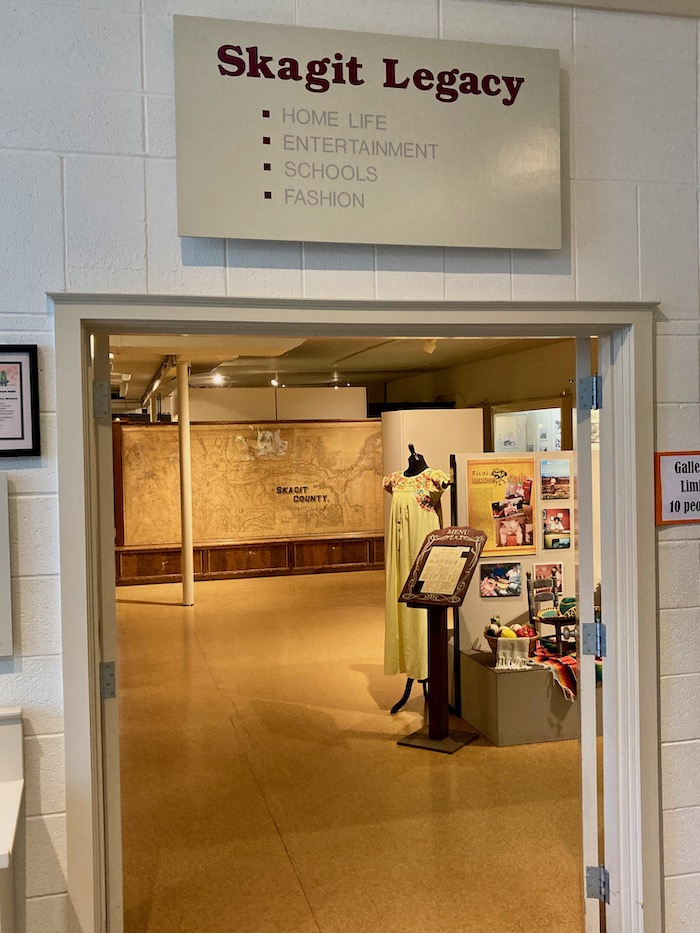
COVID-19
The coronavirus pandemic forced a hiatus on the Skagit County Historical Museum’s plans for 2020, just as it did to so many organizations. “We closed back in March, but even before there were restrictions that required us to do so. The school district had cancelled school, so we thought we would be proactive and that it would only be for a few weeks and we’d be able to open back up,” said Jo.
But that optimism vanished within a few weeks when Jo began feeling ill. “We had all started working from home, and I stayed home as well, but I felt worse and worse…and ended up in the hospital with COVID-19.” Jo spent a week in the hospital in Everett where her family her health care provider were, and then spent another two weeks quarantining in her brother’s home, followed by almost two months in relative isolation at a friend’s house.”
“I wasn’t strong enough to be alone,” Jo confessed. “I stayed down in Everett working remotely and supervising things as the museum remained closed and our staff continued to work from home. A few of them ended up on unemployment. We did a PPP (Payroll Protection Plan) loan and are still finalizing it, but we feel sure it will ultimately be forgiven.”
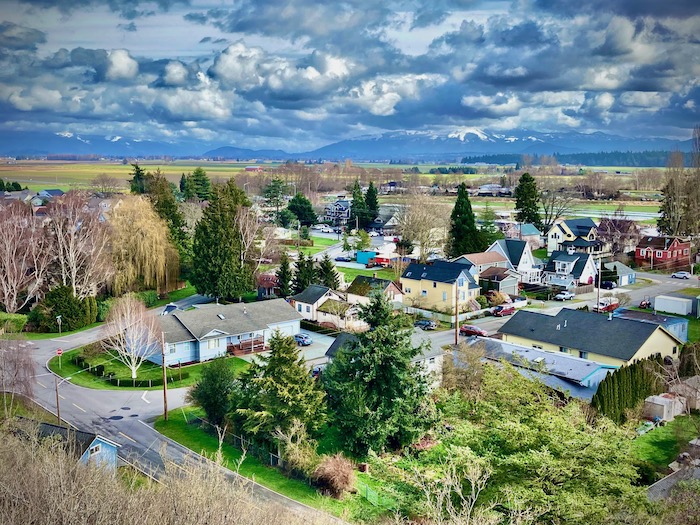
The view of the Magic Skagit from the deck off the museum’s exhibition wing is worth the price of admission alone.
With the museum shut down and Jo regaining her health, she and her staff worked up a revised operating budget and let their constituents — their members and donors — know what they were doing to survive. “We did a fairly successful COVID appeal to let people know what our plans were. There were still utilities to pay and building maintenance and some salaries that needed to be covered. We received amazing support, and then as soon as we could re-open at a minimum level we did. It was great to have people back in the building again, and we did a couple of temporary exhibits because the big one we had planned on that was supposed to open right after we shut down officially was postponed to this year.”
When the spread of the virus forced yet another shutdown, Jo and her staff worked on projects while support from renewing members and donations sustained the museum. “We’ve weathered the pandemic well,” Jo said, “other than being disappointed that we couldn’t do the things we normally do, such as school tours and our Pioneer Day program where students come to the museum for a day and meet with docents who talk about pioneer activities like churning butter and wood working. as well as hearing from a representative from the tribal community who talks about tribal culture. The programs were just gaining momentum and we had to cancel three of them.”
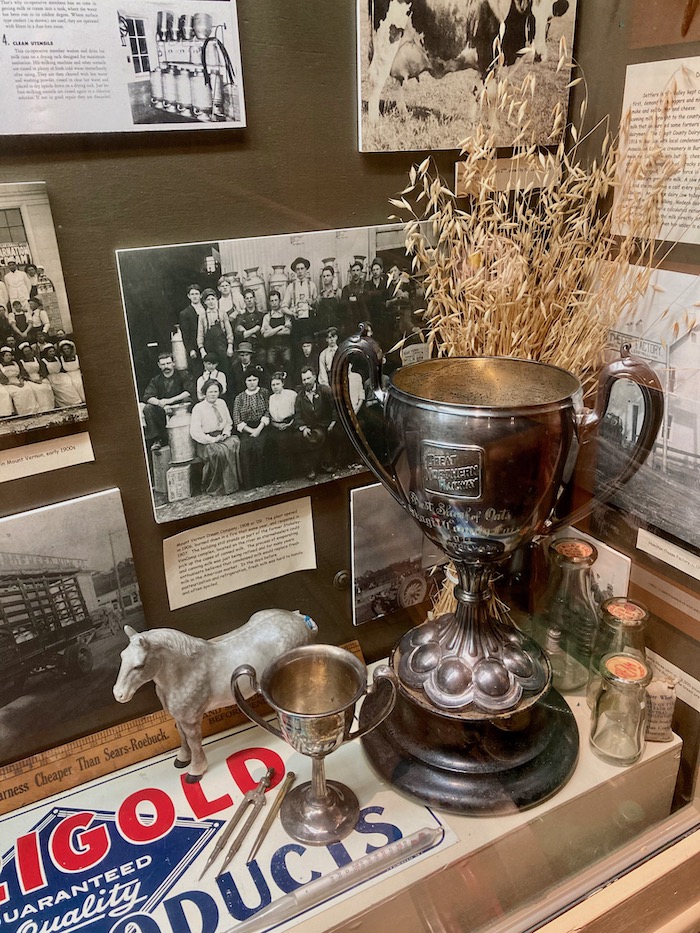
Back On Track
Jo harbors some regret that the museum wasn’t able to pivot as quickly to the new pandemic reality as she would have liked. “We are admittedly behind where we should be as far as virtual learning is concerned,” Jo told me, “but with our small staff and my being sick and our education coordinator out on maternity leave we just had to say, ‘it’s okay’.” With the museum now back at 25 percent capacity (it is open Friday – Sunday from 11am to 4pm), Jo’s team is busy working on curriculum that can be used remotely by teachers and that ties into some of its publications on Skagit history. Her education coordinator is back as well and working with a videographer to do some educational programming, including a brief tour of the museum and recording the Pioneer Day presentations that will, at some point, return to in-person.
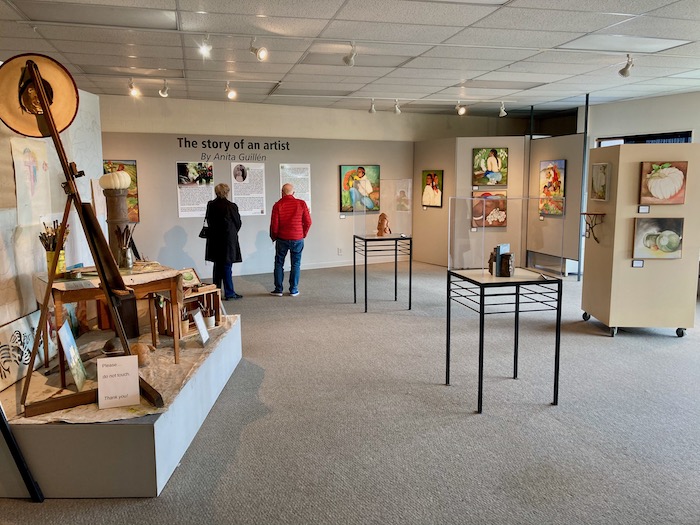
The museum is also showing its first exhibit since the shutdown, featuring the art of Jesus Guillén, a long time farm worker in the Skagit Valley whose creations depicted the lives and labors of workers from Mexico and Latin America, and on whom the agricultural economy of Skagit County depend. “This is a beautiful exhibit, and it makes us all feel better about doing what we do. A lot of people came on the first weekend.” The museum is also able to conduct some docent led tours of its north and south wings on an appointment basis.
More than anything, what Jo looks forward to most is simply having more people enjoy the museum.
“We really miss seeing the kids,” she said. “We can have up to 10 people per gallery and we provide masks and hand sanitizer, and we sanitize after people leave — but we really miss sharing the stories and the history with the kiddos, and we can’t wait to get Pioneer Days back and running…and just gathering together and seeing people. You know, it’s funny how excited we get on Zoom meetings just to see people’s faces. There is just so much left to share. We are hoping and praying for another Pioneer Association Picnic, which would be the first Thursday in August at Pioneer Park in La Conner. We’ll just have to make sure we can do it safely. We always have a salmon barbecue, so we may have to change up how the food is handled.”
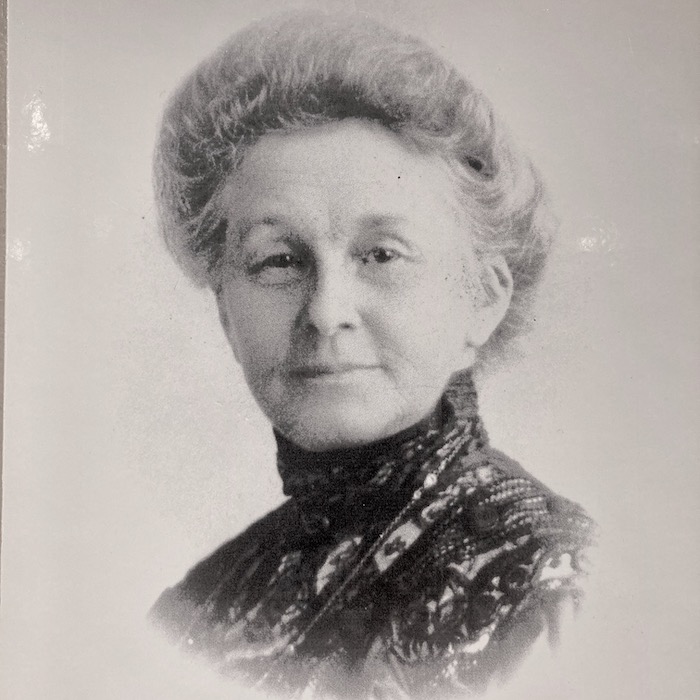
At the Skagit County Historical Museum you’ll meet the movers and shakers of late 19th Century Skagit Valley — such as Louisa Ann Conner, the namesake of La Conner, Washington.
Spend time getting to know a good museum and you’ll soon realize that it is far more than a repository of artifacts — however interesting those artifacts may be. Its displays speak to us about our communal aspirations — and we could really use a reminder of our endurance as a community during a time when signing off with, “stay safe,” seems like an aspirational statement. Jo Wolfe survived COVID-19, and her organization has as well. Both have a lot more memories to make together, and we’re all fortunate to be able to share them.
